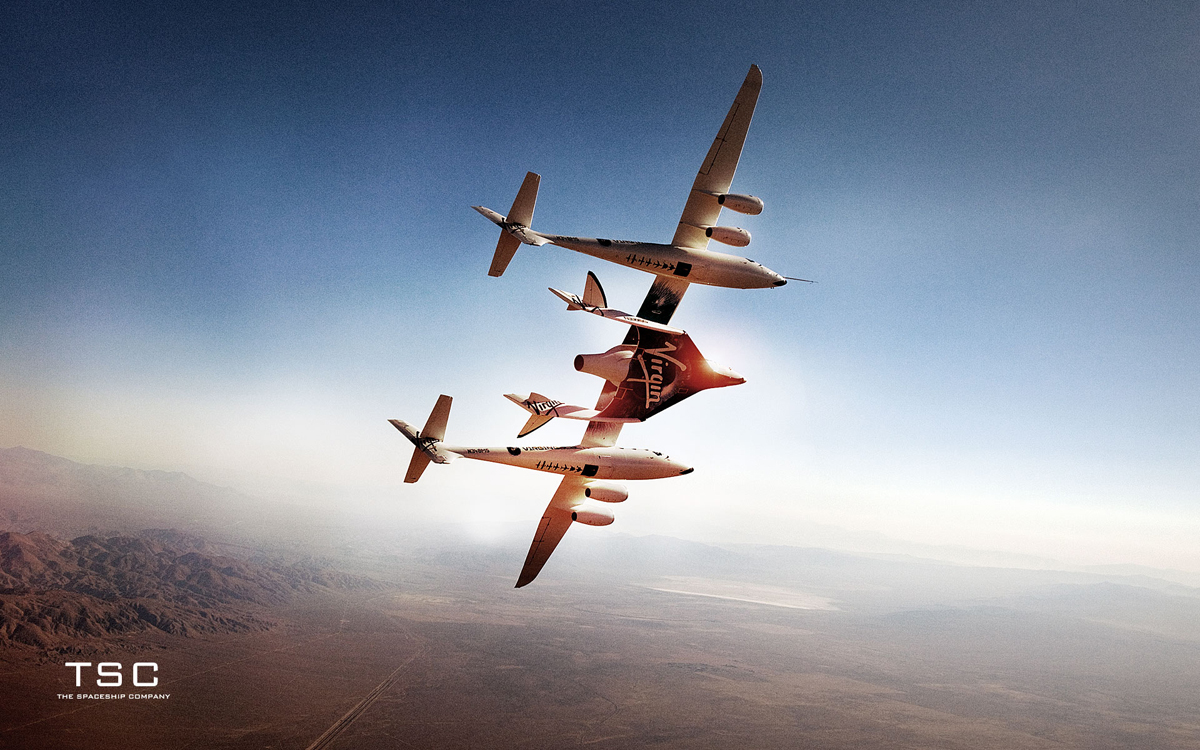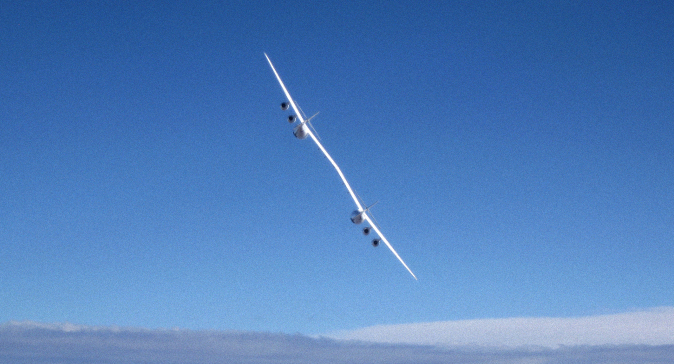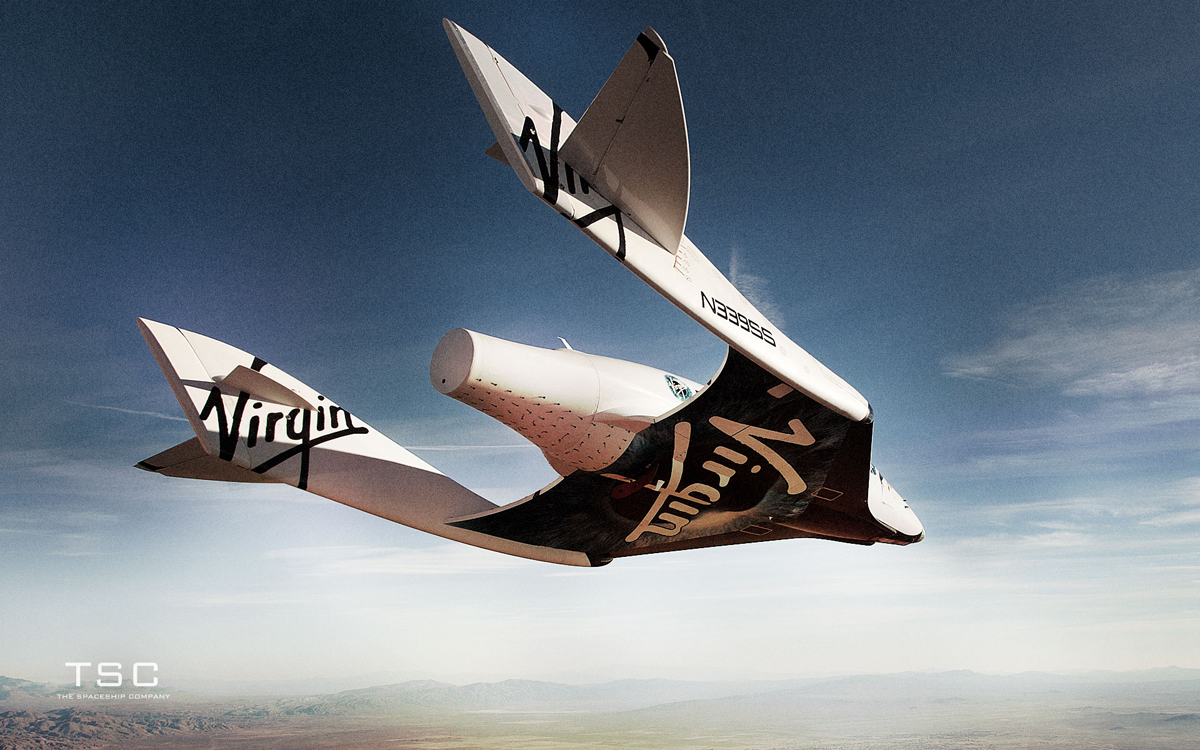Virgin Galactic's Private Spaceship Ramping Up Toward Passenger Flights


LOS ANGELES, Calif. — This year is key for Virgin Galactic's bid to become the first commercial spaceliner service, as rocket-powered flights of its SpaceShipTwo are on the books for summer.
Meanwhile, assembly of a second vehicle pair — the WhiteKnightTwo carrier plane and another SpaceShipTwo suborbital space plane — is in progress at the Mojave Air and Space Port in California.
Details of this year's Virgin Galactic milestones were highlighted by George Whitesides, chief executive officer and president of Virgin Galactic, at a Jan. 20 meeting here of The Aerospace & Defense Forum (Los Angeles Chapter).
Up to space altitude
"We're now up to over 75 test flights of the WhiteKnightTwo carrier aircraft and 16 glide flights of the suborbital spaceship," Whitesides said. "We will have more glide flights over the course of the spring." [Rise of SpaceShipTwo: The Test Flights Photos]
For these glide flights, WhiteKnightTwo carries SpaceShipTwo up to mid-air, and then drops the smaller plane to make an unpowered glide back to the ground. However, the company is ramping up toward making the first powered test flights of SpaceShipTwo, which will fire the rocket motor it will eventually use to reach the edge of space.
As a suborbital spaceship, SpaceShipTwo will zoom to an altitude of 62 miles (100 kilometers) to the edge of space, then freefall to Earth to give passengers a few minutes of weightlessness, a view of the darkness of space and the curvature of Earth below before returning to the ground.
Breaking space news, the latest updates on rocket launches, skywatching events and more!
"Over the next few months we're integrating parts and pieces of the hybrid rocket motor into the SpaceShipTwo airframe, completing ground testing of the rocket motor, and then [will] try and start powered flight over the summer," Whitesides told SPACE.com. Those rocket-powered flights, he said, will continue for some period of time.
Whitesides said it looks possible "to get up to space altitude by the end of the year, if all goes well." The next major follow-on steps, he said, involve obtaining a commercial operating license from the Federal Aviation Administration and moving operations from California to Spaceport America in New Mexico.
"We hope to get to space this year and our hope is to be able to start commercial operations from Spaceport America in 2013," Whitesides said.
Building the fleet
The suborbital SpaceShipTwo is a two-pilot, six-passenger vehicle. Cost per seat for a space traveler to be hurled to the edge of space is $200,000. The WhiteKnightTwo/SpaceShipTwo launch-system effort is being bankrolled by British entrepreneur and adventurer, Sir Richard Branson. [What 6 Gs Feels Like: A Space Tourism Primer]
Now under way is construction of the next WhiteKnightTwo and SpaceShipTwo, taking place at The Spaceship Company (TSC) in Mojave, Calif. Eventually, Virgin officials envision a whole fleet of these systems to run frequent tourist joyrides to space.
"They have already started construction of the second vehicle pair," Whitesides observed.
TSC is a joint venture between Virgin Galactic and Scaled Composites and is cranking out the first fleet of commercial suborbital spaceships and carrier aircraft.
TSC's Final Assembly, Integration and Test-Flight Hangar — dubbed FAITH — in Mojave is the site where assembly and testing of WhiteKnightTwo and SpaceShipTwo vehicles will take place, followed by rigorous test flights.
Passenger manifest
"In all of human history, there have been about 525 people that have gone to space. We now have 477 people signed up and that's growing pretty quickly," Whitesides noted. "We have about $60 million of deposits in the bank, representing about $100 million dollars of business. That's great for a system that hasn't yet gone into commercial operations. I think that's a sign for more to come," he added.
Whitesides said the passenger manifest is made up of more men than women; about one-third of the space travelers are from the United States and two-thirds are from outside the country. "It's growing more international as time goes on," he said, as it used to be more nearly half and half.
Along with ticket-buying passengers, Whitesides said a market is evolving for suborbital payloads to be hauled upward onboard SpaceShipTwo. Due to the large volume of the vehicle's interior cabin, it can be filled with experiments.
"Science prospers in a high-cycle rate environment…. you fly it, get data, learn about it, get it down on the ground and fly something else in a few days or a few weeks. We think we are going to be able to do that … rapid re-flight, very quickly," Whitesides explained.
Rare combination
Looking at the know-how and equipment imbued within the WhiteKnightTwo/SpaceShipTwo combo, Whitesides said Virgin Galactic sees it possibly spearheading point-to-point travel, with vehicles launching from, say, New Mexico, and potentially landing in Sweden or Japan in a matter of hours.
"This technology could lead towards a point-to-point solution where you get anywhere in the world in an hour. Now, is that next year? No, it’s down the road," Whitesides said. "I think that there's a long-term pathway towards that."
Whitesides said Virgin Galactic is also contemplating orbital flight.
"But our main focus is on suborbital for the time being," Whitesides said. "To make this work, whether it's Virgin or anyone else, requires a lot of money, a great technical team, and a great marketing organization to see a lot of seats. It's really hard to get those three things in the same place … and we have that right now."
It is rare thing to have in one organization that combination of money, technology, branding, and marketing, Whitesides said.
"So we have to make it work," Whitesides concluded. "What we intend to do is to dramatically open space to more people and uses."
Leonard David has been reporting on the space industry for more than five decades. He is a winner of last year's National Space Club Press Award and a past editor-in-chief of the National Space Society's Ad Astra and Space World magazines. He has written for SPACE.com since 1999.

Leonard David is an award-winning space journalist who has been reporting on space activities for more than 50 years. Currently writing as Space.com's Space Insider Columnist among his other projects, Leonard has authored numerous books on space exploration, Mars missions and more, with his latest being "Moon Rush: The New Space Race" published in 2019 by National Geographic. He also wrote "Mars: Our Future on the Red Planet" released in 2016 by National Geographic. Leonard has served as a correspondent for SpaceNews, Scientific American and Aerospace America for the AIAA. He has received many awards, including the first Ordway Award for Sustained Excellence in Spaceflight History in 2015 at the AAS Wernher von Braun Memorial Symposium. You can find out Leonard's latest project at his website and on Twitter.


